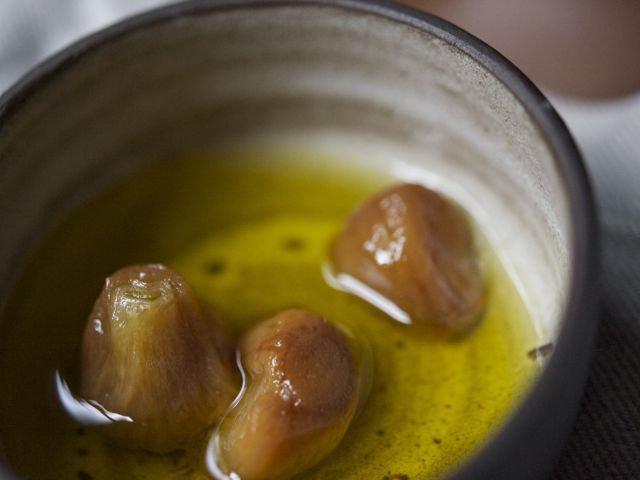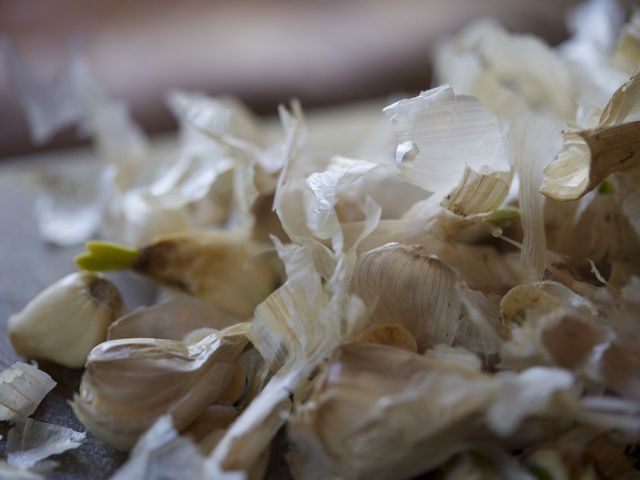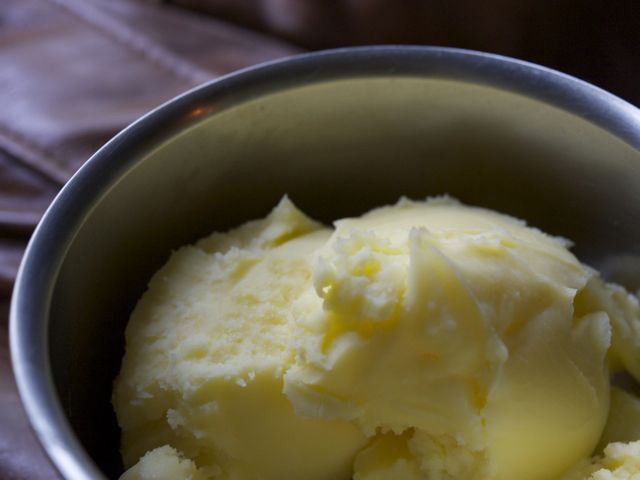6.14.11 Condimental: Garlic Confit

I’ve been working on a suggested list of pantry staples for you. Everything you need to have on hand so you don’t have to run to the store every time you want to cook something. It’s challenging. Because I cook a lot of ethnic foods, what I consider to be a staple can run to things like coconut milk and Mexican oregano. Stocking your pantry is really about knowing how you like to eat. In fact, it’s a great way to control your diet. If what you have on hand is boxed macaroni and cheese and canned soup, most likely that’s what you’ll be eating. If you're tired and the cupboard is bare, that leads to take-out. No judgment here. I get it. But let me help you figure out how to eat just a little better, how to tempt yourself with healthy treats that can sing the siren song from your fridge. Something like garlic confit is great to have around. It’s simple to prepare—just slow-cook cloves of garlic in fat—and lasts quite a while. Its mild and sweet garlic flavor is perfect on toast or whisked into sauce, salad dressing and pasta. And it's très sophisticated.

look for firm, fresh heads of garlic; green sprouts are to be avoided
"Confit" means "conserve" in French, and it generally refers to anything submerged in fat and cooked slowly, like duck legs. Thomas Keller considers garlic confit a "pantry staple," and who am I to argue? Most people recommend using a mild oil like canola or grapeseed, but since you are cooking the garlic over such low heat, olive oil is fine or better. I actually prefer to use duck fat; then I strain out the garlic and store it covered in olive oil. The garlic-flavored duck fat left over is wonderful for roasting potatoes. Especially if you like your potatoes browned and crunchy.

duck fat flavored with garlic elevates roasted potatoes beyond belief
My garlic confit, pictured up top, is actually a little too browned. You really only want the barest hint of color, or none at all. To achieve this, use something between your pan and your burner to help diffuse the heat. If you don't have a diffuser (and I don't), try a griddle or even a skillet. That way, if you forget to monitor it (as I did), there is little danger of browning. This is to insure the sweetest, most mild flavor. An optional step is to add salt and/or herbs or other spices to the oil in which you store your garlic confit. Some options include a few of sprigs of fresh thyme, a bay leaf, a couple of chiles de árbol and/or a couple of generous pinches of sea salt. When the garlic is gone, use the leftover oil to dress steamed vegetables, as a dip for artichokes, whisked into salad dressing or to make mayonnaise.
Garlic Confit
-
— 2 heads garlic
-
— 1 cup duck fat, olive oil or other neutral oil
-
— sea salt, fresh herbs, bay leaf, chile - optional
Peel the garlic cloves and slice off the root ends. Place in a small saucepan along with the fat or oil. Make sure the garlic is completely submerged; add more oil if necessary.
Heat over lowest temperature possible. If you have a diffuser or a griddle, place that between the burner and pot to moderate the heat. (A skillet also works.) You want the garlic to cook gently, with only the tiniest bubbles rising to the surface but not breaking it. Cook for about 40 minutes, stirring frequently, or until a sharp knife pierces the cloves easily.
Remove from heat and cool. Pour into a very clean glass jar. Add sea salt or herbs as desired and refrigerate. If using duck fat, remove garlic with slotted spoon, reserving fat for another purpose, and cover garlic with olive oil as above. Use garlic confit within a month.
 Download Recipe
Download Recipe

 Download Recipe
Download Recipe








1 Comment